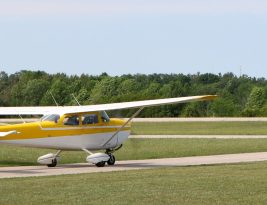“N123AS cleared to land runway one zero right”. Have you ever wondered how a runway gets its number and letter designation, like 10R (One Zero Right)? The answer is actually simple and serves as a safety feature for departing and landing traffic. The runway number is the whole number nearest
…Blog Posts
Airports come in all shapes and sizes. Some have long, hard-surfaced runways while others have short, grass runways. Some have operating control towers to regulate the flow of traffic in airspace around the airport as well as on the ground, and others do not. Airport pavement markings and signs provide
…The attitude of an aircraft is controlled by movement around its lateral (pitch), longitudinal (roll), and vertical (yaw) axes. In instrument flying, attitude requirements are determined by correctly interpreting the flight instruments. Instruments are grouped as to how they relate to control, function and aircraft performance. Attitude control is discussed
…If you watched the Super Bowl over the weekend you may have noticed the more than 300 drones during the halftime show. Yes those were really drones in the sky, however they were not actually flying during the halftime show. The entire drone sequence was filmed earlier in the week
…An important aspect of becoming a private pilot is having an understanding of weather. Even more important is having a thorough understanding of weather that could pose a potential risk to flight. The goal of this understanding is so you can identify and avoid these hazardous conditions as part of
…Icing, reduced visibility from fog or particulates, turbulence, windshear, thunderstorms, and microbursts are all types of weather that pose significant operational challenges. We’ve already discussed the weather theory behind thunderstorms and other related weather events, so today we’ll focus on the things to keep in mind should you ever find
…Did you know the percentage of oxygen in the atmosphere is a constant 21% regardless of altitude? Well it’s true! So you may be wondering why then that it gets harder to breath as you increase in altitude. The simple answer is quantity and pressure. As you increase in altitude, the
…Aircraft are flown at high altitudes for two reasons. First, an aircraft flown at high altitude consumes less fuel for a given airspeed than it does for the same speed at a lower altitude because the aircraft is more efficient at a high altitude. Second, bad weather and turbulence may
…

